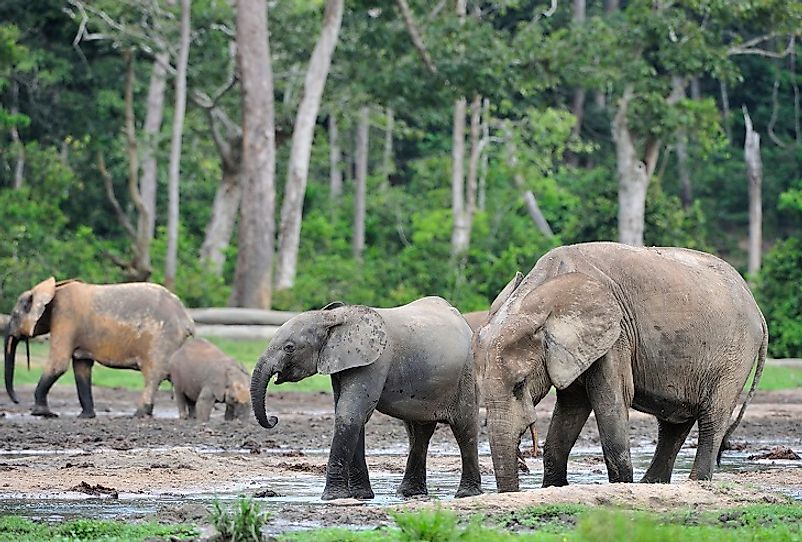Sangha Trinational Forest Reserve

The areas protected by the Sangha Trinational Forest Reserve are divided between the countries of the Central African Republic, Cameroon, and the Republic of the Congo (Congo-Brazzaville). It occupies an area of 746,309 hectares inside the Congo River Basin. The forest encompasses three national parks, and they include Lobeke National Park in Cameroon, Dzanga-Ndoki National Park in the Central African Republic, and Nouabale-Ndoki National Park in the Republic of the Congo.
5. Description -
The tropical forests of this region lie at the headwaters of the Congo River in a relatively flat area with shallow drainage lines. The vast forested area is characterized by a variety of forest types ranging from seasonally flooded areas, swamps to mud-brown rivers. This biodiversity is also evident in animals and birds including elephants, buffalo, and other endangered species. The United Nations Educational, Scientific, and Cultural Organization (UNESCO) has inscribed the forest as a World Heritage Site, bestowing the honor in 2012.
4. Climate and Geography -
The Congo Basin area in which the forest is located experiences heavy rainfall all the year round, with a very short period of relatively low rainfall. Its climate is referred top as the tropical equatorial climate. The equator passes through the basin and hence experiences high temperatures and high humidity. The area is relatively flat. This tropical forest is the second largest in the world after the Amazon, and it is estimated to take up more than 10% of the world’s carbon dioxide.
3. Tourism and Education -
One of the fascinating scenes in the forest is the existence of clearings in the swampy areas known as bais, within which animals congregate in large numbers. The gatherings provide a rare opportunity for researchers to study animals which would otherwise be hard as they remain hidden. At these areas, elephants also come to lick salt and other minerals, and they sometimes engage in fights and play which clear up the forests enabling marshy grasses to flourish creating a favorable condition for buffaloes, bongos, and other species to thrive in.
2. Habitat and Biodiversity -
The vast acreage of the reserve allows it to be one of the most diverse forest areas in the world. It is a home for many endangered primates, such as the Lowland Gorilla and the Chimpanzee. Flora and fauna of the park complement each other, elephant’s fights result to the massive falling of trees which in turn creates space for growth of grass for buffaloes and other smaller mammals. Gorillas on the other primates mostly spend most of their time over the tree canopies. The fauna of the forest is also diverse ranging from smallest of plants to the gigantic trees. The forest is estimated to have more than 10,000 plant species with 30% being endemic to the area. The size and the nature of the forest do not allow a lot of human activities, and hence flora and fauna are mostly undisturbed.
1. Environmental Threats and Conservation Efforts -
The greatest threat to any forest in the world is irresponsible logging. The Sangha Transnational Forest is not an exception to this, and is surrounded by logging concessions in each of the three countries. Human activities have also negatively affected the existence of world animal especially animals that are negatively affected by disturbance. Dzanga-Ndoki pert in the Central African Republic has also experienced high poaching rates which even caught the eye of the director of UNESCO. However, the countries have individually taken measures towards the conservation of the forest. For example, the government of the Republic of the Congo has partnered with the Wildlife Conservation Agency together with several other international partners to create the second ever national park in the country. The efforts have seen the park remain intact with almost no human interference or exploitation and an increased number of large mammals. The three countries have also have appointed a team of organized park administrators who act as prefects to the park. These efforts have been successful and have even attracted foreign donors who help the governments financially to conserve the environment.











